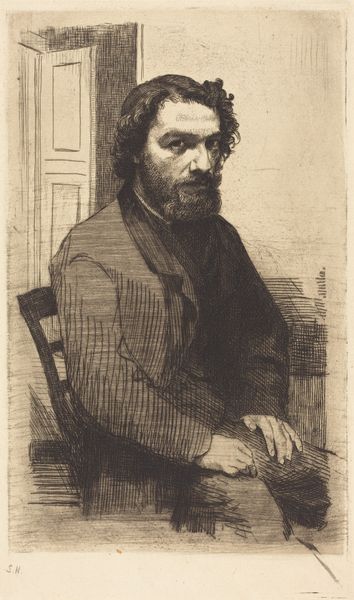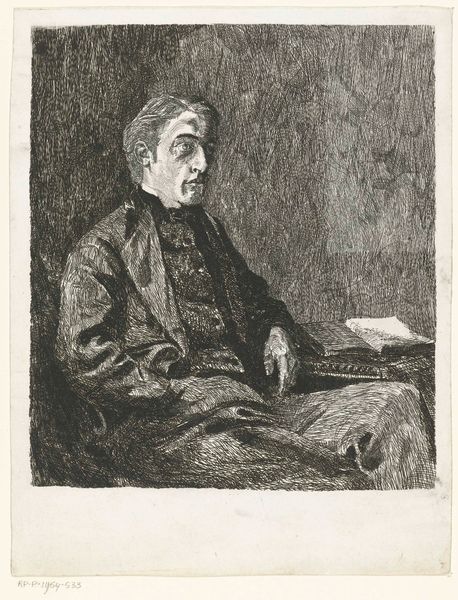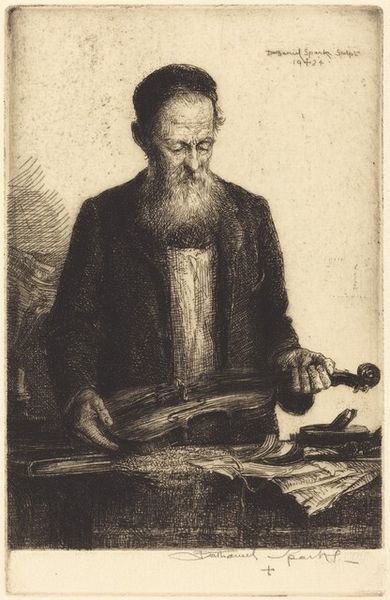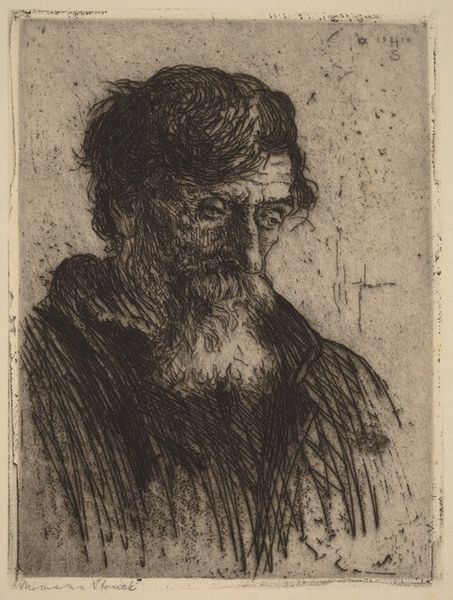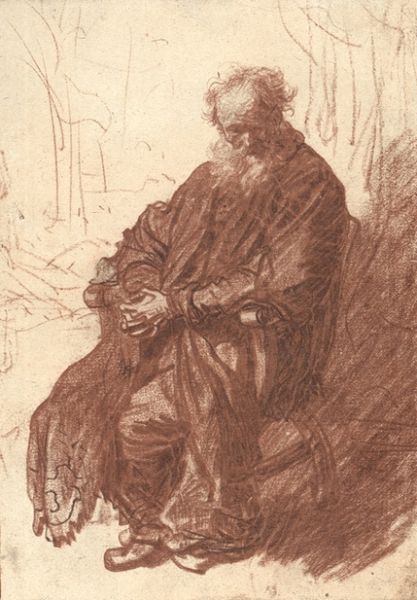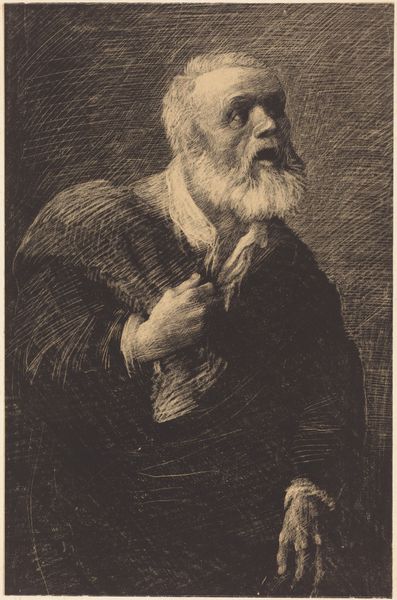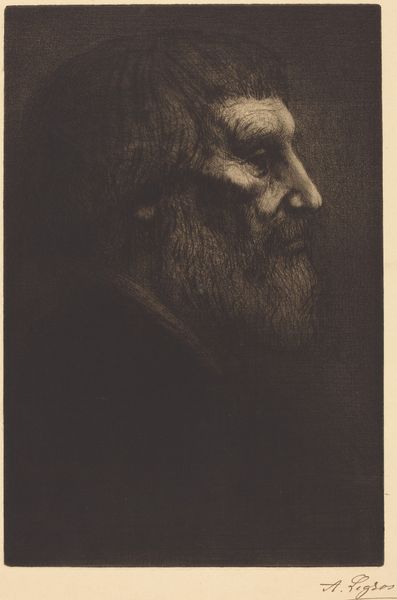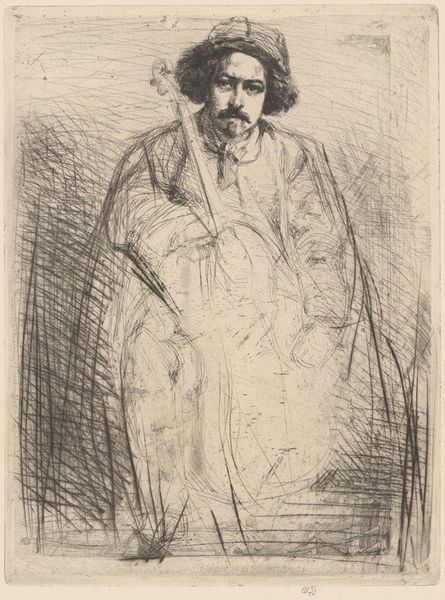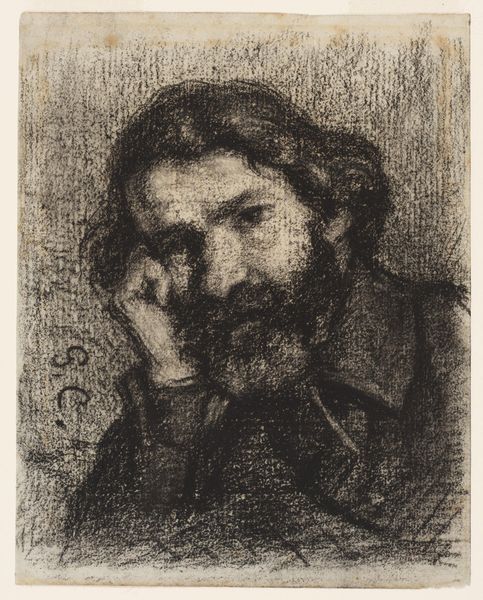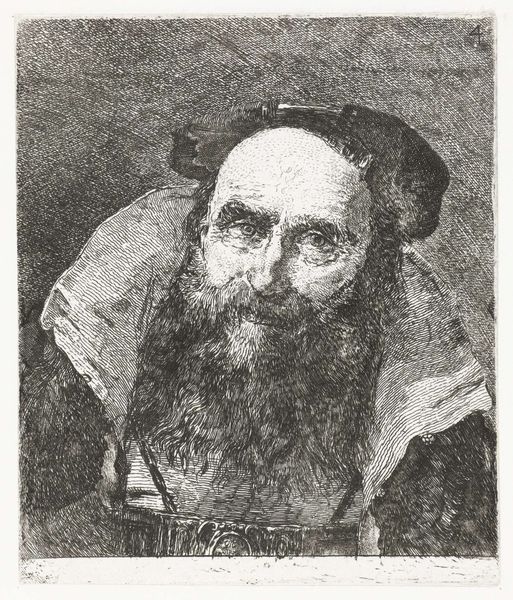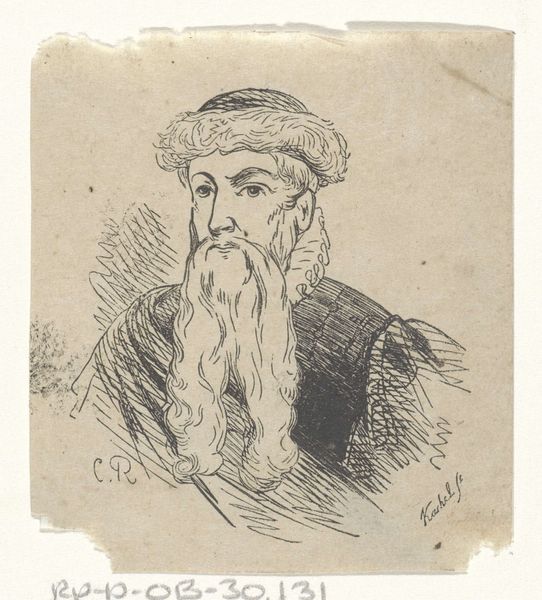
print, etching
#
portrait
# print
#
etching
#
realism
Copyright: National Gallery of Art: CC0 1.0
Editor: This is "Rev. Dr. James," an etching made in 1927 by Muirhead Bone. The detail in the subject's face and beard is amazing. What strikes me most is how the process of etching, the very act of repeatedly applying acid, could create such a soft, almost gentle, effect. How do you interpret this work, especially given the choice of medium? Curator: I'm fascinated by the material processes at play here. Consider the etcher’s craft: the copper plate, the acid resist, the biting process. Each stage is a labor, a physical engagement. Bone is employing a decidedly *industrial* method—acid etching—to depict a man, presumably of letters, likely in a study or library, suggesting a space of thought and, perhaps, resistance to the machine age. It's an interesting juxtaposition. Editor: So, the materiality of the print is actually in tension with the subject matter? The industrial meets the intellectual? Curator: Precisely! This was produced in 1927; What does this tell us about the accessibility of this artform to the wider public through mass production and consumption? And what are the material limitations or possibilities of an etching versus, say, a painting or a photograph, during that period? Editor: That makes me think about how the prints, due to the possibility of reproducibility, are made affordable. They become available for different classes of people to own, which in turn democratizes art and the art market. I never thought about etching this way, but looking at the piece now, I can almost see the labor involved, like layers accumulating! Curator: Yes, and to delve a bit further, consider the paper, the inks used. Where did those materials originate? Whose labor contributed to their production? Reflecting on these aspects, it is clear that art making never exists in isolation but reflects production and distribution networks within society. Editor: I’m really grateful for this discussion; It opens my eyes to the broader contexts in which to see the art and not just look at the aesthetics!
Comments
No comments
Be the first to comment and join the conversation on the ultimate creative platform.
